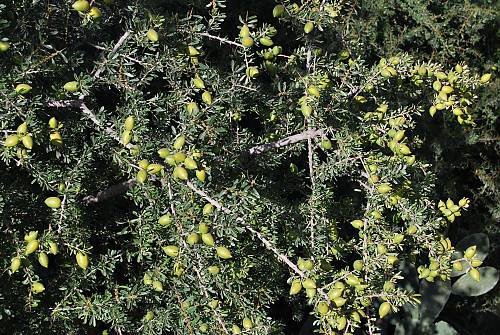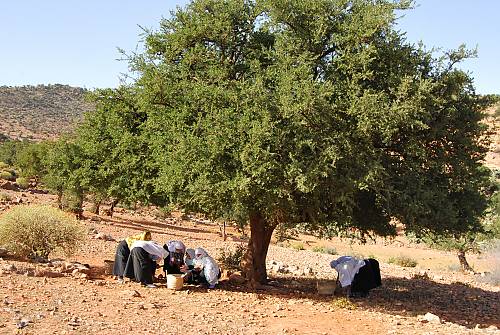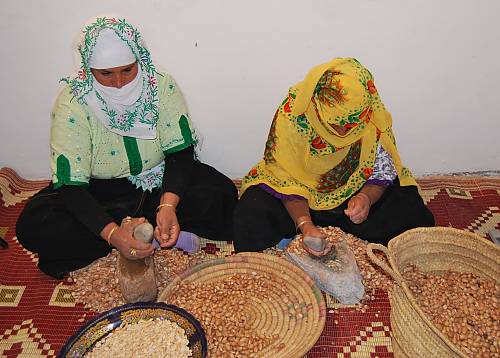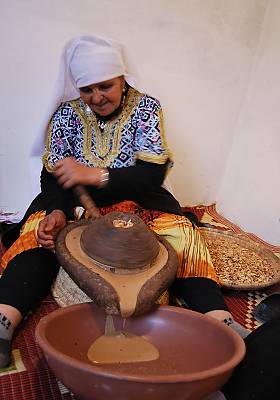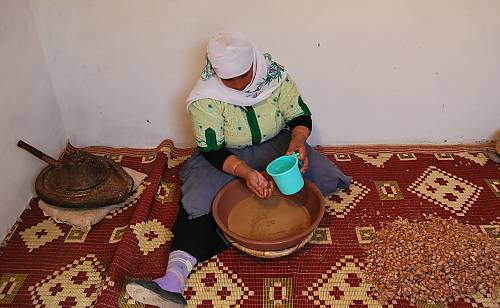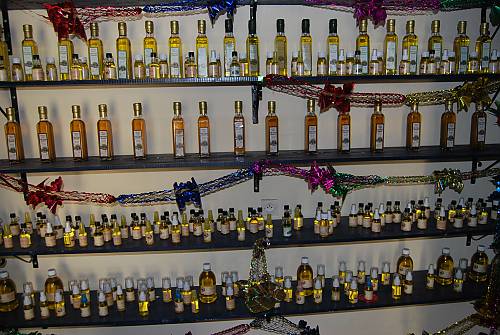Argan, practices and know-how concerning the argan tree
Inscribed in 2014 (9.COM) on the Representative List of the Intangible Cultural Heritage of Humanity
The argan tree is an endemic woodland species found in the Arganeraie Biosphere Reserve in south-west Morocco. Rural women and, to a lesser extent, men living in the reserve practise traditional methods to extract argan oil from the fruit of the tree. Different tasks, transmitted by means of imitation and through non-formal education, are required to obtain the oil, which has multiple uses for cooking, medicines and cosmetics. These include harvesting the fruit, drying, pulping, grinding, sorting, milling and mixing. The specific hand mill is manufactured by local craftspeople, and the mixing involves the gradual addition of warm water in exact quantities. All the cultural aspects of the argan tree, including the cultivation of the tree, oil extraction, the preparation of recipes and derived products, and the crafting of traditional tools for the various tasks, contribute to social cohesion, understanding between individuals and mutual respect between communities. Argan oil is given as a wedding gift and is used extensively in the preparation of festive dishes. Traditional know-how specific to the extraction of the oil and its multiple uses is systematically transmitted by ‘argan women’, who teach their daughters from a young age to put it into practice.


